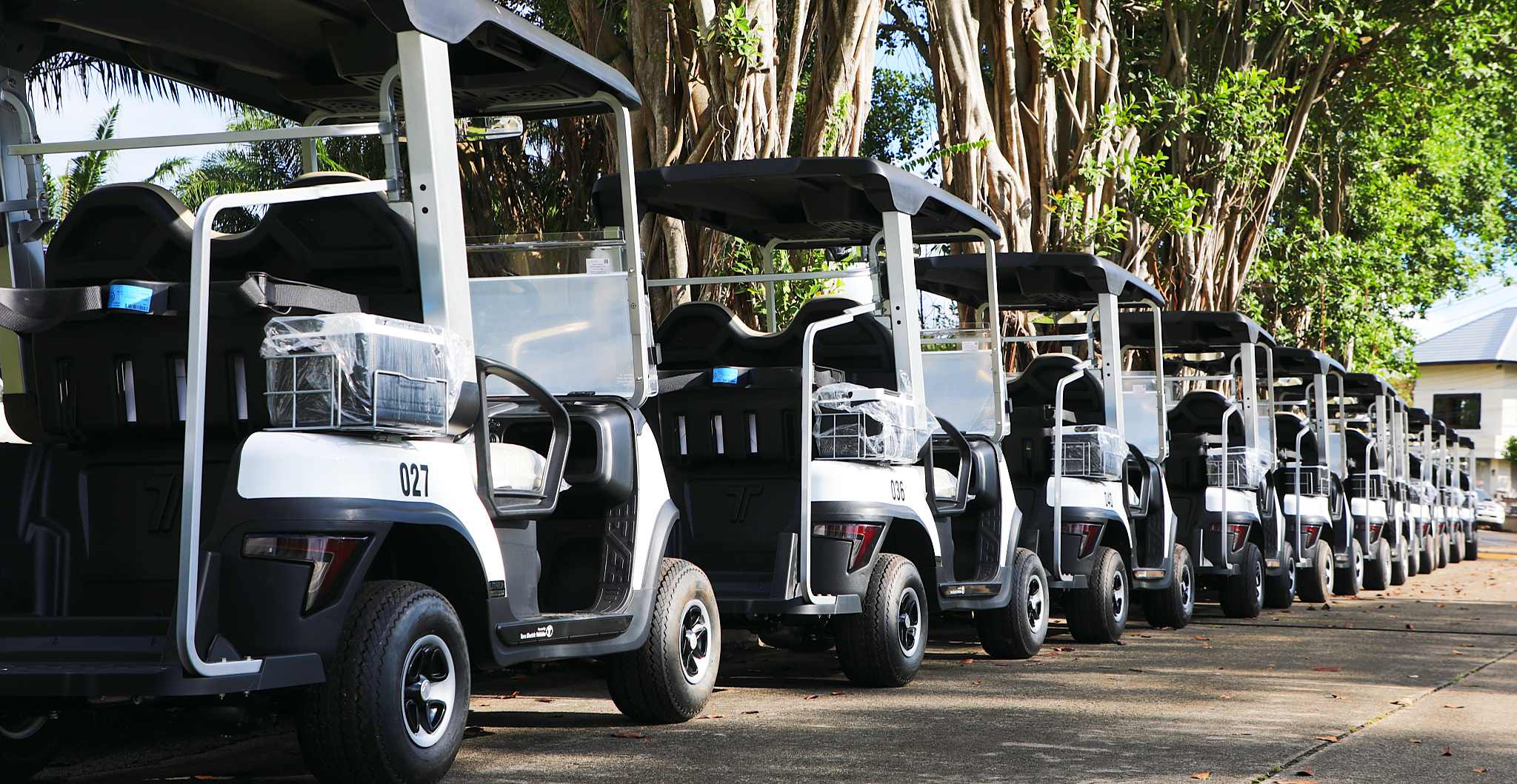With the development of the golf industry, more and more courses are modernizing and electrifying their golf carts. Whether it’s a newly built course or an upgrade of an older fleet, receiving new golf carts is a meticulous process. A successful delivery not only affects vehicle performance and lifespan but also directly impacts member experience and operational efficiency. Therefore, course managers must master the key points of the entire process from acceptance to commissioning.

I. Pre-Delivery Preparations
Before the new carts are delivered to the course, the management team needs to make thorough preparations to ensure a smooth acceptance and commissioning process. Key steps include:
1. Confirming the Purchase Contract and Vehicle List
Check that the vehicle model, quantity, configuration, battery type (lead-acid or lithium), charging equipment, and additional accessories match the contract.
2. Confirming Warranty Terms, After-Sales Service, and Training Plans to ensure future maintenance and technical support are guaranteed.
3. Site Preparation and Facility Inspection
Check that the course’s charging facilities, power capacity, and installation location meet the vehicle requirements.
Equip electric golf carts with charging, maintenance, and parking areas to ensure safety and convenience.
4. Team Training Arrangements
Organize golf course staff in advance to attend manufacturer-provided golf cart operation training, including daily driving, charging operations, emergency stopping, and basic troubleshooting.
The manufacturer will arrange training for golf course managers on the vehicle data monitoring system, ensuring they understand how to use the intelligent management platform or GPS system. (If applicable)
II. Acceptance Process on the Delivery Day
The delivery day is a crucial step in ensuring the new vehicle’s quality and functionality meet expectations. The process typically includes the following aspects:
1. Exterior and Structural Inspection
Inspect the exterior components such as the paint, roof, seats, wheels, and lights for scratches or shipping damage.
Confirm that armrests, seats, seat belts, and storage compartments are securely installed to ensure safe use.
Inspect the battery compartment, wiring terminals, and charging ports to ensure there are no loose parts or abnormalities.
2. Power and Battery System Testing
For gasoline-powered vehicles, check the engine starting, fuel system, exhaust system, and braking system for proper functioning.
For electric vehicles, battery level, charging function, power output, and range performance should be tested to ensure stable operation under high load.
Use diagnostic tools provided by the manufacturer to read vehicle fault codes and system status, confirming that the vehicle is operating well under factory settings.
3. Functional and Safety Testing
Test the steering system, braking system, front and rear lights, horn, and reversing alarm, among other safety functions.
Conduct low-speed and high-speed test drives in an open area to ensure smooth vehicle handling, responsive braking, and stable suspension.
For vehicles equipped with a GPS fleet management system, test the GPS positioning, fleet management system, and remote locking functions to ensure they are functioning correctly.
III. Post-Delivery Commissioning and Operational Preparation
After acceptance, the vehicles require a series of commissioning and pre-operational preparations to ensure smooth fleet deployment:
1. Charging and Battery Calibration
Before initial use, a complete charge-discharge cycle should be performed according to the manufacturer’s recommendations to establish standard battery capacity.
Regularly record battery level, charging time, and range performance to provide reference data for subsequent management.
2. Vehicle Identification and Management Coding
Each vehicle should be numbered and labeled for easy daily dispatching and maintenance management.
It is recommended to enter vehicle information into the fleet management system, including model, battery type, purchase date, and warranty period.
3. Develop a Daily Maintenance and Dispatch Plan
Clearly define charging schedules, shift rules, and driver precautions to avoid insufficient battery power or overuse of vehicles.
Develop a regular inspection plan, including tires, brakes, battery, and vehicle structure, to extend their lifespan.
IV. Common Problems and Precautions
During vehicle delivery and commissioning, stadium managers need to pay special attention to the following easily overlooked issues:
Improper Battery Management: Prolonged use with low battery or overcharging in the initial stages of new vehicles will affect battery life.
Inadequate Operation Training: Drivers unfamiliar with vehicle performance or operating methods may experience accidents or accelerated wear.
Incorrect Intelligent System Configuration: GPS or fleet management software not configured according to the actual needs of the stadium will affect operational dispatching efficiency.
Missing Maintenance Records: Lack of maintenance logs will make troubleshooting difficult and increase operating costs.
These problems can be effectively avoided through advance planning and standardized operating procedures.
V. Continuous Optimization After Commissioning
Commissioning vehicles is just the beginning; the course’s operational efficiency and vehicle lifespan depend on long-term management:
Monitor vehicle usage data, adjust shift schedules and charging plans to ensure efficient fleet operation.
Regularly review member feedback, optimize vehicle configuration and routes to improve member satisfaction.
Adjust dispatch strategies according to seasons and peak tournament periods to ensure every vehicle has sufficient battery power and is in good condition when needed.
Maintain communication with the manufacturer to obtain timely software updates or technical upgrade suggestions to ensure the fleet continues to lead the industry.
VI. Cart Delivery is the Beginning
Through a scientific acceptance process, a comprehensive training system, and standardized dispatch strategies, course managers can ensure that the new fleet serves members safely, efficiently, and sustainably.
For modern golf courses, cart delivery is the starting point of fleet operation and a crucial step in improving member experience, optimizing management processes, and creating a green and efficient course.
Post time: Nov-19-2025






